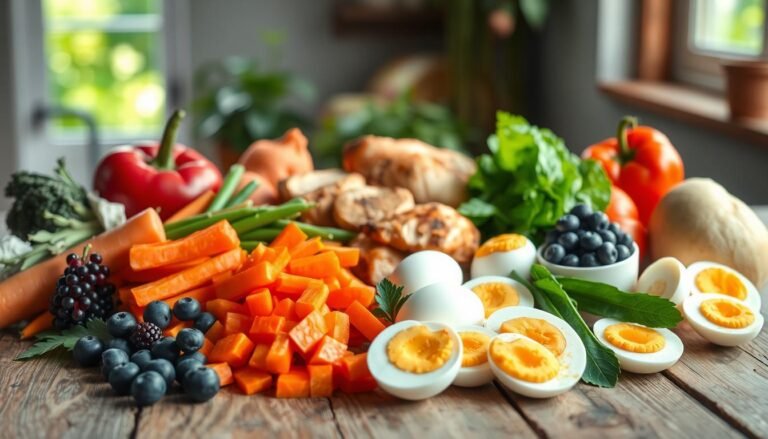Have you ever wondered what the best diet is for your furry friend? With the abundance of dog food options available, it’s a common concern for pet owners to figure out what’s healthiest for their dogs. You might be curious about the differences between raw dog food and kibble, and which option could lead to a happier, healthier pup.
Understanding the Basics of Dog Nutrition
Before diving into the comparison between raw dog food and kibble, it’s essential to understand dog nutrition. Dogs require a balanced diet that includes proteins, carbohydrates, fats, vitamins, and minerals. This balance helps them maintain energy, support their immune system, promote healthy skin, and encourage optimal growth and development.
Macros Matter
- Proteins are vital for building and repairing tissues. High-quality protein sources help dogs maintain muscular strength and support their overall health.
- Carbohydrates provide energy. While dogs can live without carbs as their primary energy source, they still benefit from some fibrous carbohydrates that aid digestion.
- Fats are crucial for healthy skin and coat, as well as providing energy. Omega fatty acids found in certain fats are particularly beneficial to dogs.
Micronutrients are Just as Important
Vitamins and minerals play a significant role in your dog’s overall health. They support functions such as vision, bone development, and immune response. A well-rounded diet should provide these micronutrients to ensure your dog thrives.
What Is Raw Dog Food?
Raw dog food, often called a raw diet or biologically appropriate raw food (BARF), consists of uncooked meat, bones, fruits, and vegetables. This diet aims to mimic what dogs would eat in the wild, focusing on their carnivorous ancestry.
Components of a Raw Diet
Typically, a raw dog food diet includes:
- Muscle meat: Provides protein and essential amino acids.
- Bones: They are not only a source of calcium but also help in dental health.
- Organ meats: These are nutrient-dense and rich in essential vitamins.
- Fruits and vegetables: Adding a variety of these can supply additional vitamins, fiber, and antioxidants.
The Benefits of Feeding Raw
- Improved Coat Condition: Many pet owners report a shinier and healthier coat in their dogs on a raw diet.
- Better Digestion: Raw food tends to be easier for dogs to digest, leading to less stool and improved absorption of nutrients.
- Dental Health: Chewing raw meaty bones can help reduce plaque and tartar buildup.
- Increased Energy Levels: Many owners notice their dogs have higher energy levels and improved overall vitality.
What Is Kibble?
Kibble is a commercially prepared dog food that is usually dry and varies in size, shape, and nutritional value. It is convenient and has a long shelf life, making it a popular choice for many dog owners.
Components of Kibble
Kibble is typically made from:
- Meat meal: A concentrated source of protein that has had moisture removed.
- Grains or vegetables: Ingredients like corn, wheat, or rice often serve as fillers and sources of carbohydrates.
- Vitamins and minerals: These are often added to ensure nutritional adequacy.
- Synthetic additives: Preservatives, colors, and flavors may be included to improve shelf life and palatability.
The Benefits of Feeding Kibble
- Convenience: Kibble is ready to serve and doesn’t require preparation, making it easy for busy pet owners.
- Cost-Effective: Generally, kibble is more affordable than raw diets, especially if you have a larger dog.
- Formulated Nutrition: Many kibble brands provide balanced nutrition formulated by veterinarians and animal nutritionists.
- Variety of Options: You can find kibble tailored for various life stages and specific health concerns.
Comparing the Two: Raw Dog Food vs. Kibble
Understanding the benefits of both raw dog food and kibble can help you make an informed decision about your dog’s diet. Below, we compare both options across critical factors.
Nutrition
| Factor | Raw Dog Food | Kibble |
|---|---|---|
| Protein Quality | Generally high-quality proteins; species-appropriate | Variable, low-quality proteins in many brands |
| Carbohydrates | Typically low, focusing on meat and veggies | High in grains and fillers |
| Additives | Usually no synthetic additives | Often contains preservatives and artificial ingredients |
| Balanced Nutrition | Requires careful formulation; can lack some vitamins | Formulated with added vitamins and minerals |
Palatability and Taste
Dogs are undeniably attracted to the smell and taste of meat. Many raw-fed dogs show excitement when food is served.
Conversely, some dogs may find kibble less appealing, especially if they’ve never been exposed to fresh protein sources. Kibble options do come in various flavors, but taste can be subjective based on your dog’s preferences.
Cost
| Factor | Raw Dog Food | Kibble |
|---|---|---|
| Initial Setup Cost | Generally higher due to purchasing ingredients | Lower upfront costs for bulk purchases |
| Long-Term Cost | Can become expensive; depends on sourcing quality | More budget-friendly, especially for larger dogs |
Preparation Time
Kibble is ready to serve out of the bag, while raw food requires preparation and considerations regarding safe handling procedures.
If you decide to try raw feeding, you’ll need to plan meals in advance. This can be a rewarding experience, but it does require more time and effort on your part.
Risks Associated with Raw Dog Food
While many dog owners advocate for raw food diets, it’s important to consider the potential risks involved.
Bacterial Contamination
Handling raw meat comes with the risk of bacterial contamination, such as Salmonella or E. coli, which can affect both dogs and humans. Raw feeders must commit to proper hygiene and food handling practices to minimize these risks.
Nutritional Imbalance
If you’re not careful about formulating your dog’s diet, raw feeding can lead to nutritional deficiencies or imbalances. It’s essential to do thorough research, and consulting with a veterinarian is wise to ensure you’re covering all nutritional bases.
Bone Hazards
While raw bones can benefit dental health, they can also pose physical risks. Sharp fragments may lead to choking hazards or even punctures in the digestive tract. Choosing appropriate sizes and types of bones for your dog is crucial.
Risks Associated with Kibble
Although kibble comes with its conveniences, there are concerns as well.
Low-Quality Ingredients
Many cheaper kibble brands contain low-quality ingredients, including fillers and by-products. This can lead to poor digestion, allergies, or skin issues for your dog.
Preservatives and Additives
Some kibbles contain artificial additives, colors, and preservatives, which may not be ideal for your dog’s long-term health. Always read the ingredient labels carefully.
Lack of Fresh Ingredients
Kibble lacks the fresh ingredients found in raw diets, which can lead to a less varied diet in terms of nutrients. Rotating flavors may help, but it doesn’t replace the nutrient density of raw food.
Making the Best Choice for Your Dog
When it comes to choosing between raw dog food and kibble, there is no one-size-fits-all answer. Here are some factors to consider to determine what best suits your dog’s unique needs.
Age and Activity Level
The age and activity level of your dog can play a significant role in determining the best diet. Puppies, active breeds, and senior dogs all have different requirements. Consult your vet for personalized recommendations based on your dog’s specific needs.
Health Conditions
If your dog has health issues, certain diets may be more suitable. For example, dogs with sensitive stomachs may benefit from easily digestible kibble, while others may thrive on a raw diet. Discuss with your veterinarian before making any dietary changes.
Taste Preference
You know your dog better than anyone else, and considering his or her taste preference is key. If your dog turns their nose up at kibble but goes wild for raw meat, that might suggest they’re a better fit for the raw food diet. However, some dogs are perfectly content with kibble.
Transitioning Your Dog’s Diet
If you decide to change your dog’s diet from kibble to raw or vice versa, transitioning should be done gradually. Sudden changes can upset your dog’s stomach.
The Gradual Process
- Start Slowly: Begin by mixing a small amount of the new food with their current food. Gradually increase the amount of the new diet over 7-10 days.
- Monitor for Reactions: Keep an eye on your dog’s digestion, energy levels, and any signs of food intolerance or allergies.
- Consult Your Vet: If you’re unsure about the best way to transition or have concerns, reach out to your vet for advice tailored to your dog’s unique health profile.
Conclusion: The Healthiest Option
Ultimately, the choice between raw dog food and kibble comes down to your dog’s individual needs, preferences, and health conditions. Both diets have their pros and cons, and what works for one dog may not work for another. Doing thorough research and consulting your veterinarian will be vital in ensuring you provide the best nutrition for your furry friend. Whichever path you choose, your dog will surely appreciate the love and care you provide through their diet!





